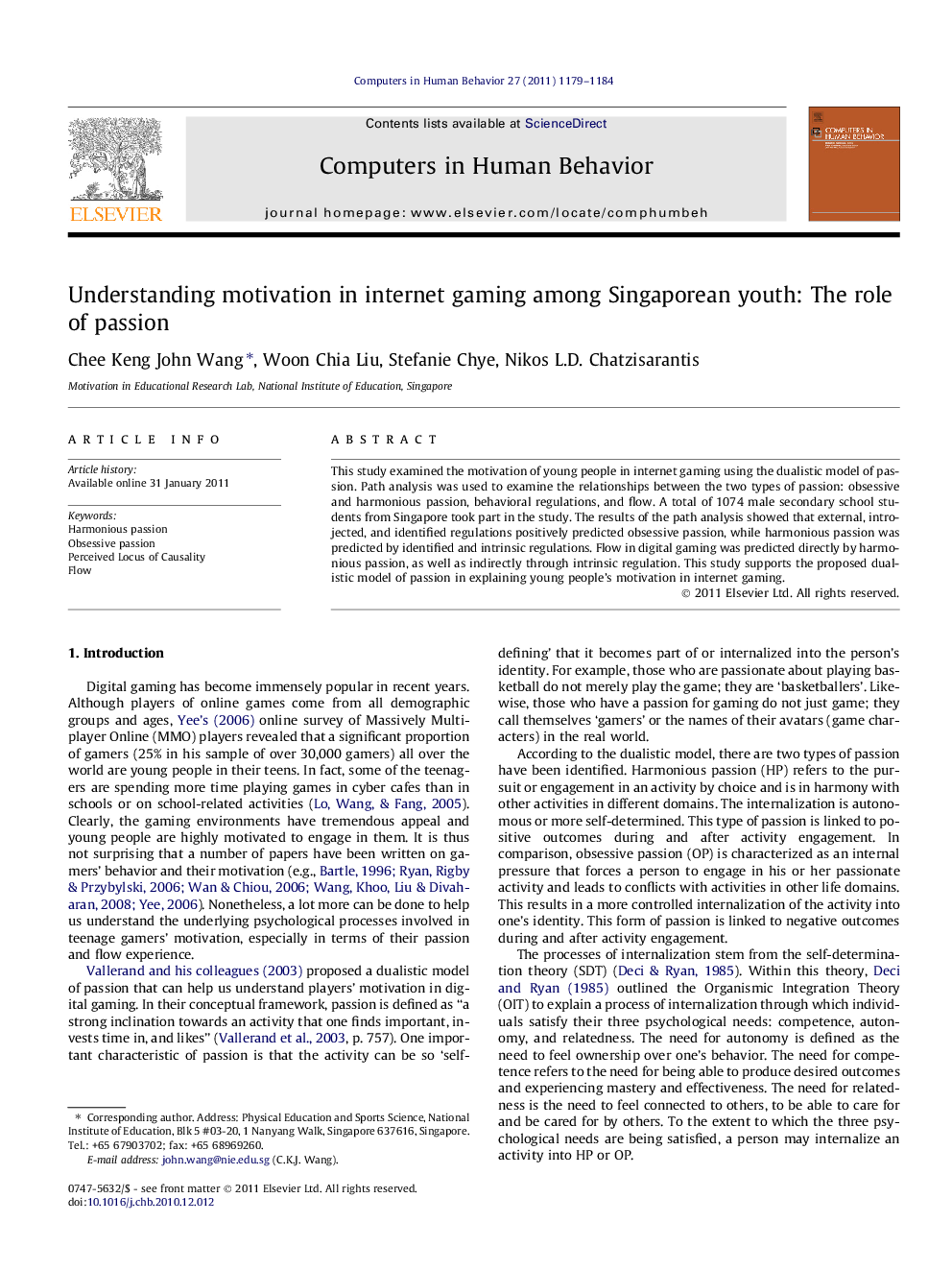| Article ID | Journal | Published Year | Pages | File Type |
|---|---|---|---|---|
| 351725 | Computers in Human Behavior | 2011 | 6 Pages |
This study examined the motivation of young people in internet gaming using the dualistic model of passion. Path analysis was used to examine the relationships between the two types of passion: obsessive and harmonious passion, behavioral regulations, and flow. A total of 1074 male secondary school students from Singapore took part in the study. The results of the path analysis showed that external, introjected, and identified regulations positively predicted obsessive passion, while harmonious passion was predicted by identified and intrinsic regulations. Flow in digital gaming was predicted directly by harmonious passion, as well as indirectly through intrinsic regulation. This study supports the proposed dualistic model of passion in explaining young people’s motivation in internet gaming.
